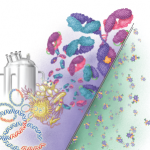“I would love to say that my patients are going to pay less, and biologics are going to be more available because they’re cheaper,” says Dr. Snow. “But we have no proof of that yet. I hope that we reach that goal eventually, but it is unknown at this time.”
It’s also unclear whether treatment assistance programs will be available for biosimilar products similar to those currently available for Humira and other reference biologics. However, Dr. Helfgott believes some form of these programs are likely to remain available due to various tax and legal considerations.
Physician Burden & Communication
Although it’s unlikely patients currently on a biologic will have to undergo an additional round of prior authorizations to be moved to a biosimilar, the introduction of so many biosimilars at once will not make the process any easier. “It’s already a huge burden on practices to navigate prior authorizations,” says Dr. Snow, “and it’s only going to [get worse].”
Dr. Nola encourages rheumatologists to lean on specialty pharmacists, where available, because they can help with prior authorizations and navigating the overall introduction of biosimilars. “These pharmacists are a good resource in terms of figuring out which products are actually going to be available and which ones plans will cover,” she says.
The patient education and reassurance aspect will also be important during this rollout, especially for patients happy with their reference biologic. A survey conducted in 2020 and 2021 found that two-thirds of patients were unfamiliar with the concept of biosimilars. Patients had concerns about safety, side effects and financial support for the biosimilar. However, after receiving some basic education, the majority were open to considering biosimilars, especially if cost considerations were factored into the decision. Patients also wanted to be informed if a switch to a biosimilar was going to occur.7
Dr. Nola dislikes the use of the word “generic” in educating patients, although she acknowledges it is a term with which patients are familiar. But generics are typically small molecule products, and biosimilars are much more complex. “It’s important for patients to understand that these biosimilars have been deemed similar enough, structurally and chemically, to whatever product they may have been on previously,” she says. “Patients should understand these drugs are just as good as these other agents out there, and that there should be no differences clinically or from a safety perspective.”



